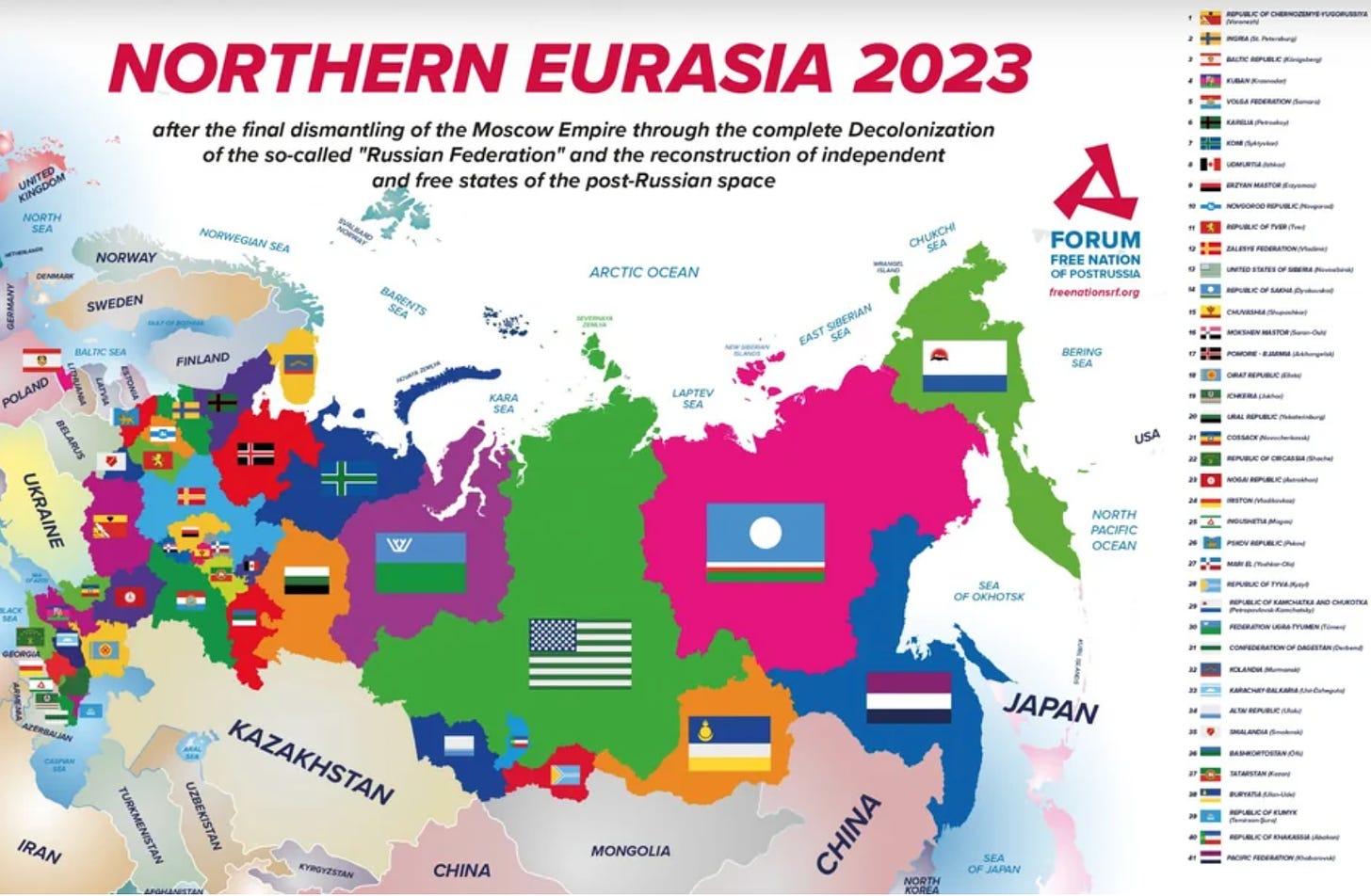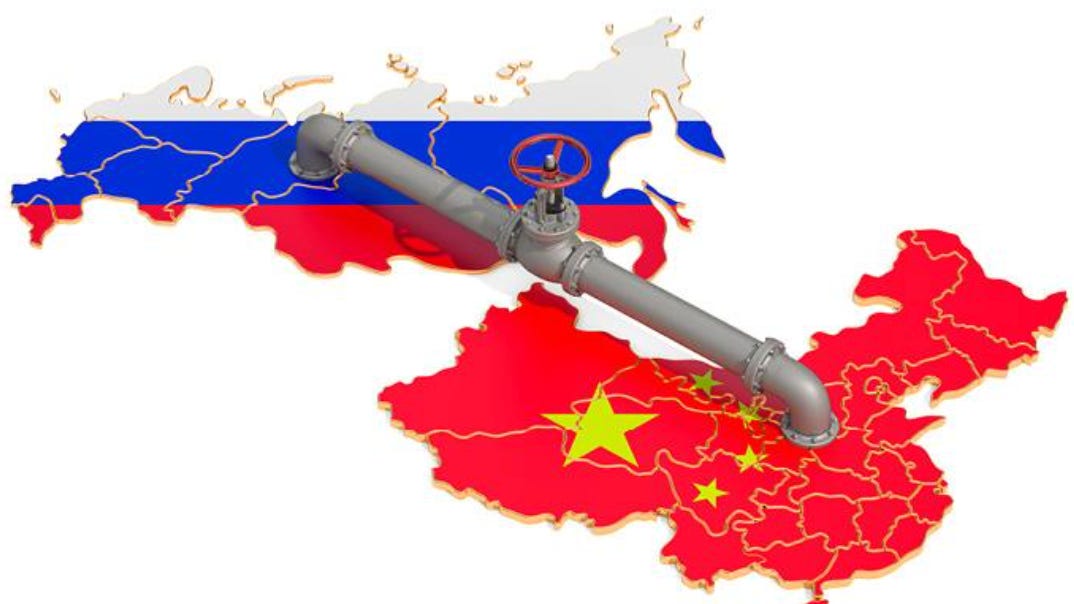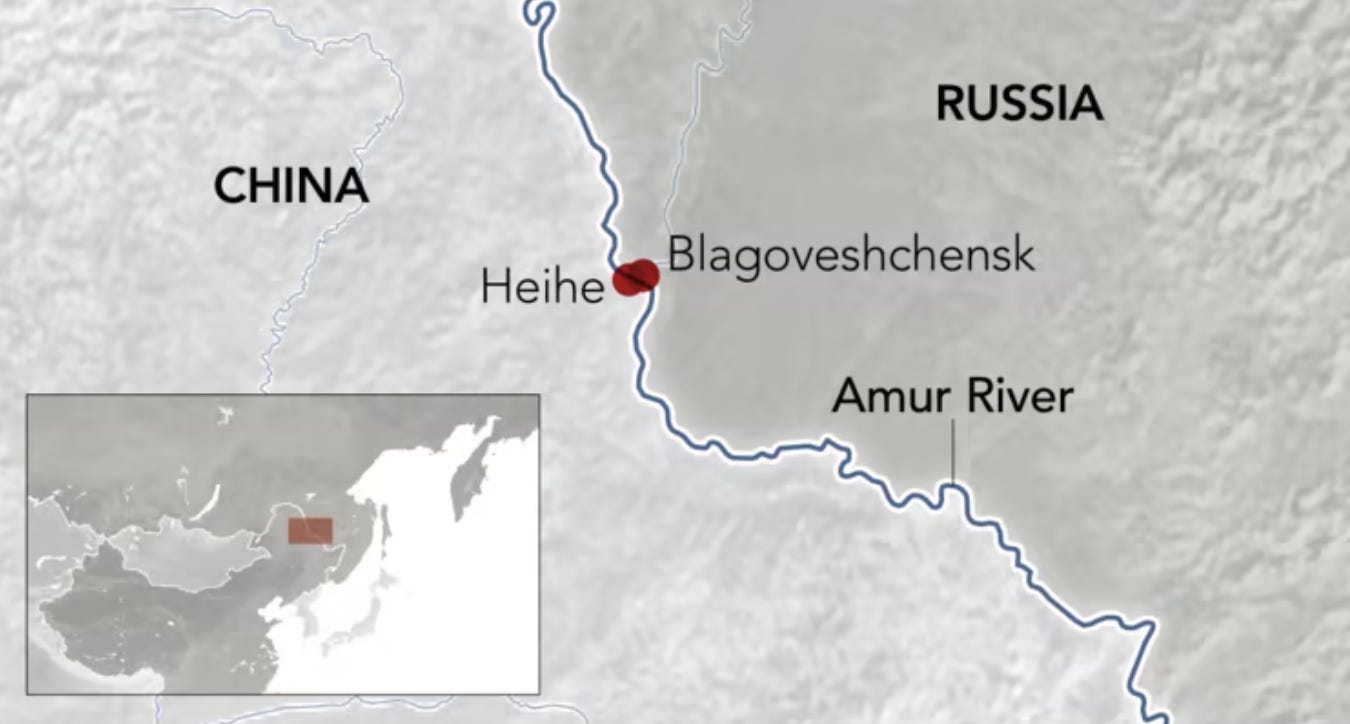The Russia-Ukraine War will, like the Soviet-Afghanistan War, result in the disintegration of the Russian Federation because Moscow will be unable to support or control its Eurasian land mass with 11 time zones. Already Russia has lost allies, its European customers, foreign investors, trillions in assets hidden offshore by Putin and his oligarchs, and $300 billion in foreign exchange assets frozen in central banks. Russia will be financially crippled and some regions will opt to leave its sinking ship of state. The likeliest candidates to exit are those European regions in Russia’s southwest and northwest with cohesive societies and economic prospects. But the biggest issue involves the future of Russia’s three massive Asian regions, with immense resources. All will be up for grabs and the first to be snapped up will be Outer Manchuria which was stolen from China by Russia in the mid-19th century.

Russia’s Manchuria (also called Outer Manchuria) belonged to China until 1858. It is an area the size of Nigeria which includes a long coastal area along the Sea of Japan and Vladivostok as well as Sakhalin Island and the Kuril Islands, both obtained in 1945 from Japan. These territories have a population of 4.5 million, untapped natural gas and iron ore along its coastline, and significant amounts of oil and gas on Sakhalin Island. By contrast, China’s Manchuria (also called Inner Manchuria) is a dynamic province with a population of 107 million that is industrialized and a trade hub. Beijing would gladly reclaim all of Manchuria, and there is little doubt that a weak and crumbling Russia might be forced to divest these lands for a price.
For decades, the border separating Russian and Chinese Manchuria has been disputed and fought over. Finally, the hatchet was buried in the 1980s when a Sino-Russian coalition developed -- a marriage of convenience that coalesced in order to counteract American influence and to facilitate trade. But the relationship between Moscow and Beijing profoundly changed after the February 24, 2022 invasion of Ukraine. The unprovoked aggression not only upended international norms, but President Xi Jinping had no idea this was going to happen when he signed a “no limits partnership” with Putin just days before the incursion.
Since then, Xi has distanced himself from Putin and remained “neutral”. China has not condemned the invasion nor has it imposed sanctions, but has refused to supply weapons to Russia. However, it helps finance the war, as does India and others, by importing record amounts of Russian energy at deeply discounted prices. At the same, Beijing has begun to cautiously pivot toward the West following imposition of America’s protectionist Chips Act which restricts access to vital semiconductor technology. China has spoken out against the use of nuclear weapons by Russia and attempts to broker a peace deal, following pressure from its European and American customers.
This week’s meeting with U.S. Secretary of State Anthony Blinken marks a détente between the two superpowers and the beginning of a new post-Russia world order. Even Chinese government institutes have begun to question the “no limits” partnership with Russia. And Xi’s silence and refusal to sign Putin’s Power of Siberia 2 gas pipeline, to divert Russian gas from Europe to China, represents a tacit and polite rejection of Moscow. As one Beijing observer said: “I would say the Chinese are aware of Russian sensitivities, particularly in the past 10 to 15 years, and don’t want to, as we say in Chinese, drop a stone on someone already at the bottom of the well.”
The entire Asian portion of Russia – referred by outsiders as “Siberia” —encompasses all lands east of the Ural Mountains. It is bigger than Canada and was nomadic until the 16th Century when it was subjugated by the Czars. Today, Asian Russia is divided into three administrative regions: the Ural Federal District, the Western Siberia Federal District, and the Far Eastern Federal District. All are sparsely populated, resource-rich, and run by Russian administrators who govern its dozens of ethnic groups. If Russia’s center does not hold, all these lands, and their leaders, will be courted by China, the West, Central Asia, Turkey, and Arab nations.
The Ural Federal District is furthest west and part of the Eurasian Steppe. It has 12 million residents, mostly Russians. Industrialized and agrarian, the region in 2006 produced 90 percent of all Russian natural gas, 68 per cent of its oil, and 42 percent of metals. To its east is the Siberian Federal District with 17 million residents, a multicultural mix of many ethnic groups. It produces oil, has Russia’s largest oil refinery, is a center of coal mining, and makes steel, iron, machinery, and chemicals. Its agricultural products include wheat, rice, oats, and sugar beets plus livestock.
The Far Eastern Federal District includes the Arctic region and Pacific Ocean coastline. Despite its size, its population is only 6 million and 4.5 million live in Russian Manchuria along the Chinese border. If Manchuria were once again united, it would become an powerhouse, linking the region’s untapped resource potential with China’s know-how, manpower, expertise, and capital. It would also provide China with fresh water, hydroelectric potential, and a major Pacific Ocean port, Vladivostok.

An NGO called The Free Nations of Post-Russia Forum is led by Austrian economist Gunther Fehlinger who believes there are 41 potential nations imprisoned inside Russia. He suggests that the West help those in Asia form an EU-type alliance, he calls the EAU or EurAsian Union, to assist and democratize them. Political scientist Janusz Bugajski, author of Failed State: A Guide to Russia’s Rupture, wrote that a break-up was inevitable because “a total of 35 Russian republics and regions share a land border or a narrow sea frontier with 14 foreign countries. Long-standing historical, ethnic, and religious links will encourage several neighboring states to play a more prominent role in kindred regions. Some capitals may also recognize emerging political entities as independent states and even push for unification.”
Interestingly, China is already well on its way toward establishing “economic hegemony” in Manchuria as well as along the border of Siberia and the Urals. Only 500,000 ethnic Chinese currently reside inside the Russian Federation, but Chinese cities with millions sprout along its borders, building economic regions, factories, farms, and businesses that provide goods and services that Russians are uninterested or incapable of producing. Two border cities — one in Russian Manchuria and another in Chinese Manchuria — illustrate the differences in economic aptitude. Russia’s Blagoveshchensk is a sleepy town with a population of 211,000. China’s Heihe, across the river, has a population of 1.673 million and is a bustling, industrial city.
The Chinese portion of Manchuria is geographically bigger than Japan, Germany or South Korea and a significant producer of agricultural crops and raw materials such as timber, oil, and coal. In addition, factories proliferate there as do high rise towers housing millions of workers. If united, Manchuria will develop Manchuria’s onshore resource potential, and harness Sakhalin Island with its large oil and gas reserves.
In essence, the war has revealed that the Russian Federation is simply the remains of an empire that is now controlled by a Slavic elite in Moscow and St. Petersburg that has terrorized its citizenry and lives like royalty. The result is that Russia’s overall GDP is smaller than China’s industrialized Province of Guangdong outside Hong Kong. And in 2022 Putin launched a war that devours its economy and future. Russia heads for the ditch, and, frankly, not soon enough. Europe’s last remaining empire should disappear and Asia should be governed by Asians.







You may be interested in knowing, Diane, that right across the Sea of Azov and to the East of Crimea (across the Kerch strait) is an area known as Kuban. It was an area dominated by the "Kuban Cossacks" -an offshoot of the most powerful Ukrainian "Zaporozhian"Cossack state, -and settled for at least the last 300 years primarily by Ukrainians. According to Czarist census and continuing into the first half of the 20th century, Ukrainians were the majority population (55%) while Russians were the second largest group.
In 1905 a temporary Kuban Military government was formed. The pro-Russian and pro-Ukrainian factions struggled to obtain supremacy. The pro-Ukrainian faction supported autonomy and Union with Ukraine. "Ukrainian cultural life flowered. Ukrainian-language schools opened and 6 newspapers began to publish in Ukrainian. In May 1918 a delegation headed by the head of the Kuban Rada M. Riabovol visited Kiev. Diplomatic ties were announced between the Kuban People's Republic and the Ukrainian People's Republic". (https://en.wikipedia.org/wiki/Ukrainians_in_Kuban)
Stalin's Holodomor and forced Russification hit Kuban especially hard and it is now difficult to determine the underlying sentiments of the population, but there are an increasing number of events that suggest that the repressed Ukrainian historical memory and linkage is still strong.
Perhaps the potential decolonization of Russia may take root very close to the Ukrainian homeland.
I am concerned for Japan. BUT, as RU disintegrates in power there will be movement. I hope it's not violent - bullying - which is what RU is characteristically known for. The demise of RU is 1st - then the realignment will hopefully be peaceful and coordinated - wishful thinking though. (Too much wealth for niceties among them.)